Dearborn Station, also known as Polk Street Depot, is one of the remaining central stations in Chicago. Located at the foot of Printer’s Row, the passenger hub was once notably taller, featuring a distinctive steep pitched roof. In this seventh Lost Legends article, we will discuss the changes to the station during its 140-year history, which include the loss of its crowning structure, among other elements.
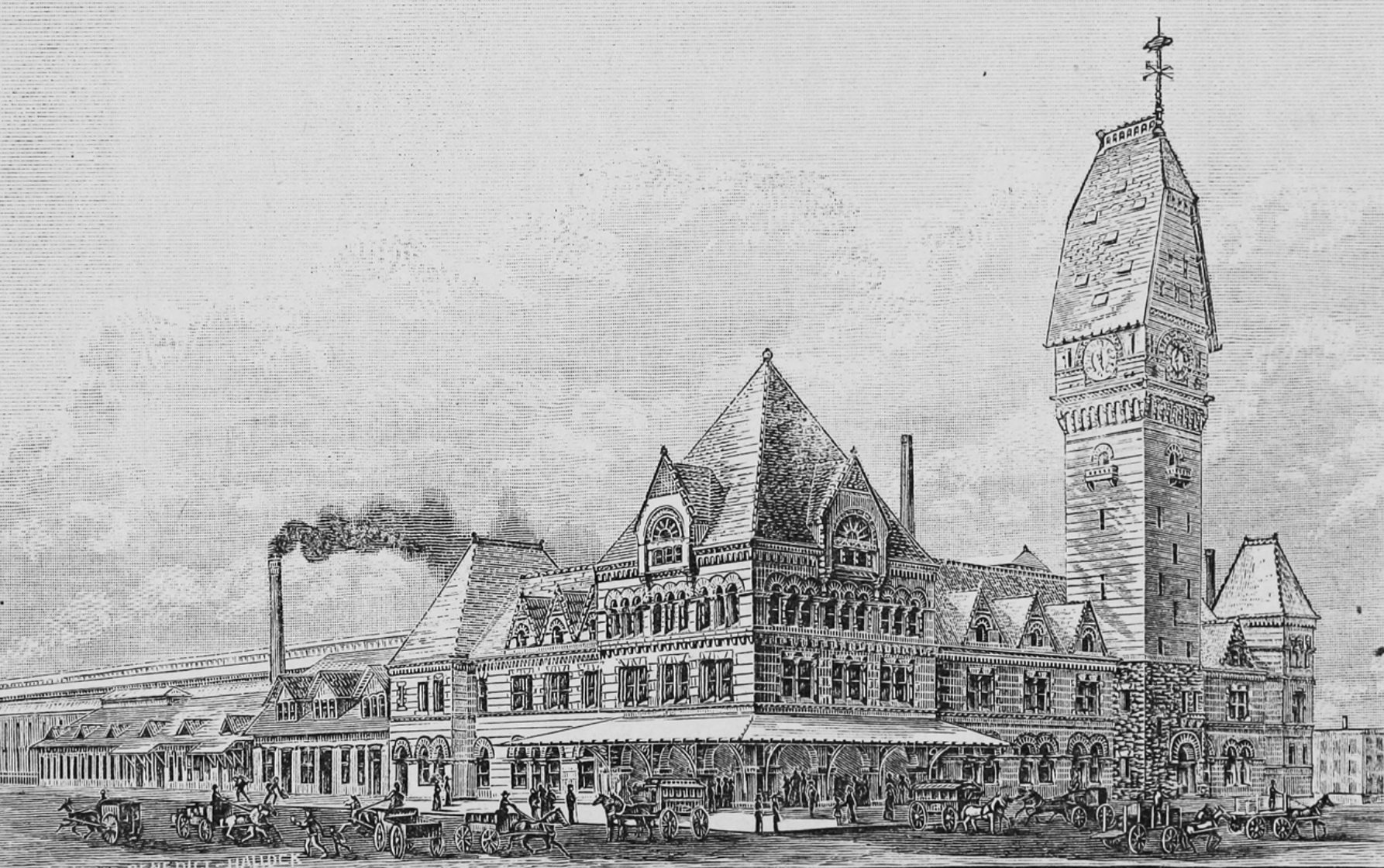
Dearborn Station. Photo by Marquis’ Hand-Book of Chicago
History
Built in 1883 for what was estimated to be close to $500,000 ($16.3 million in 2023), Dearborn Station was the brainchild of Cyrus L. W. Eidlitz, a Fellow of the American Institute of Architects and the son of famed architect Leopold Eidlitz. This Romanesque Revival edifice at Dearborn & Polk was one of the six key intercity train stations serving downtown Chicago. Some of the earlier serviced railroads included the Atchinson, Topeka and Santa Fe Railway, the Chesapeake and Ohio Railway, and the Chicago and Eastern Illinois Railroad.
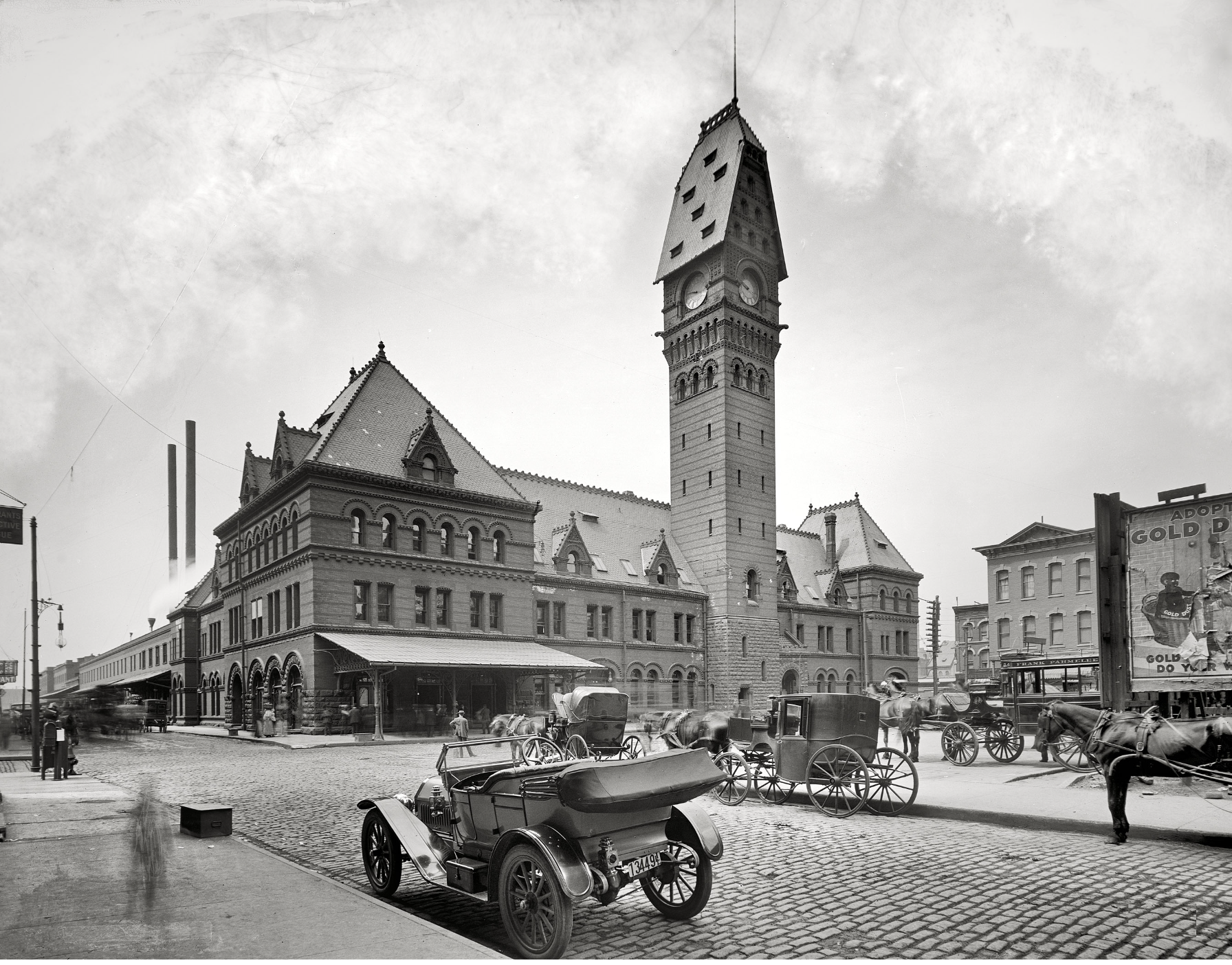
Dearborn Station. Photo via Chicagology
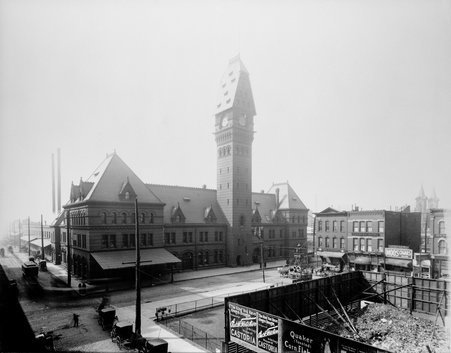
Dearborn Station. Photo by Barnes-Crosby Company via the Chicago History Museum
Architecture
Dearborn Station was a quite recognizable architectural achievement, wrapped in a pink granite and red pressed brick Romanesque Revival style. According to an article on the station’s website, the tower originally stood over 170 feet in height, and weighed 1,860 tons atop its 1,200 square-foot footprint.
The twelve-story clock tower could be prominently seen when looking south along the Dearborn corridor, playing a vital functional role for civilians in the late 19th and early 2oth centuries. However, as Chicago’s skyline grew and watches and other devices became more ubiquitous, the clock became less functional and more decorative.
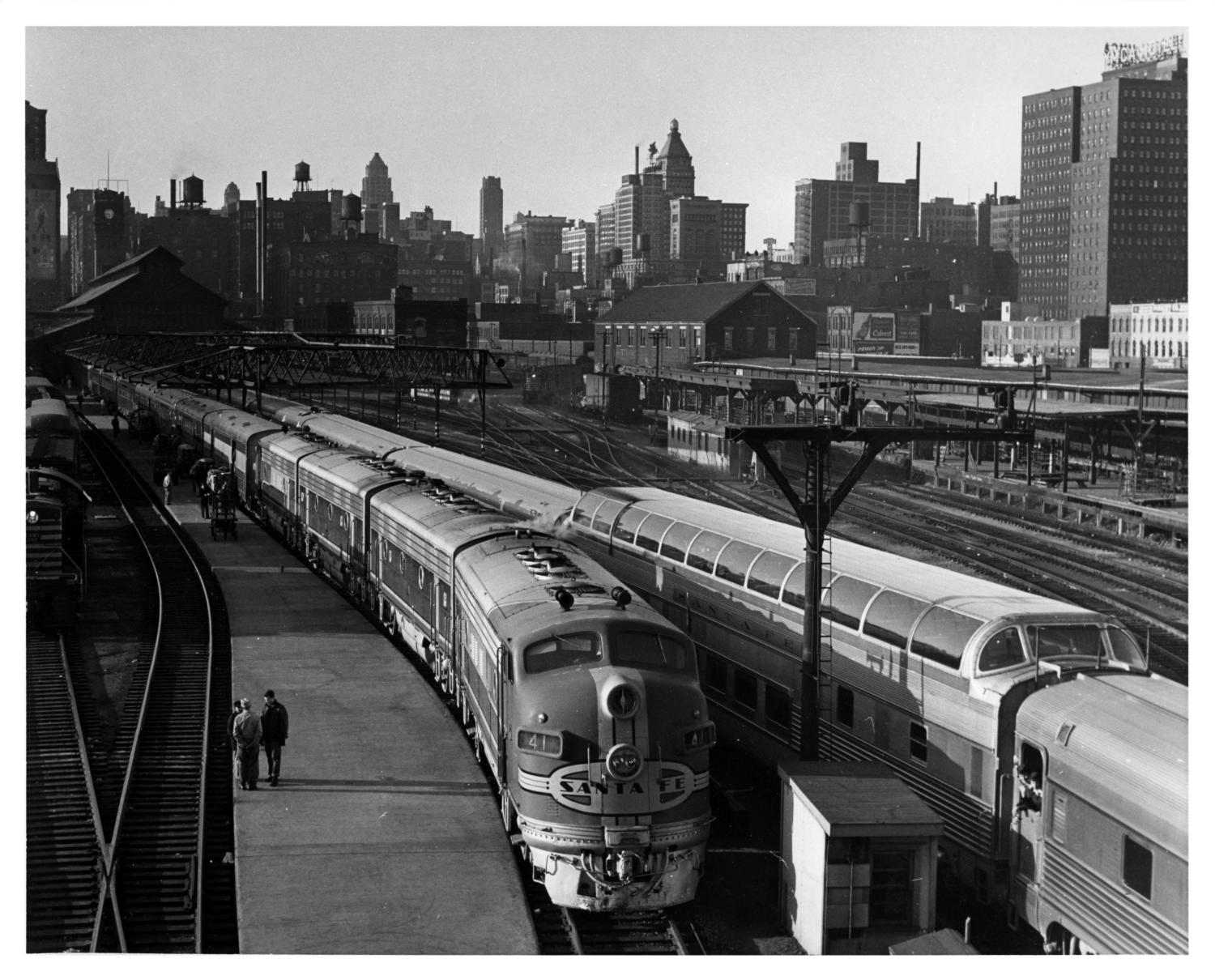
Dearborn Station in 1952. Photo by Frank Meitz via The Museum of the American Raildroad and The Portal to Texas History
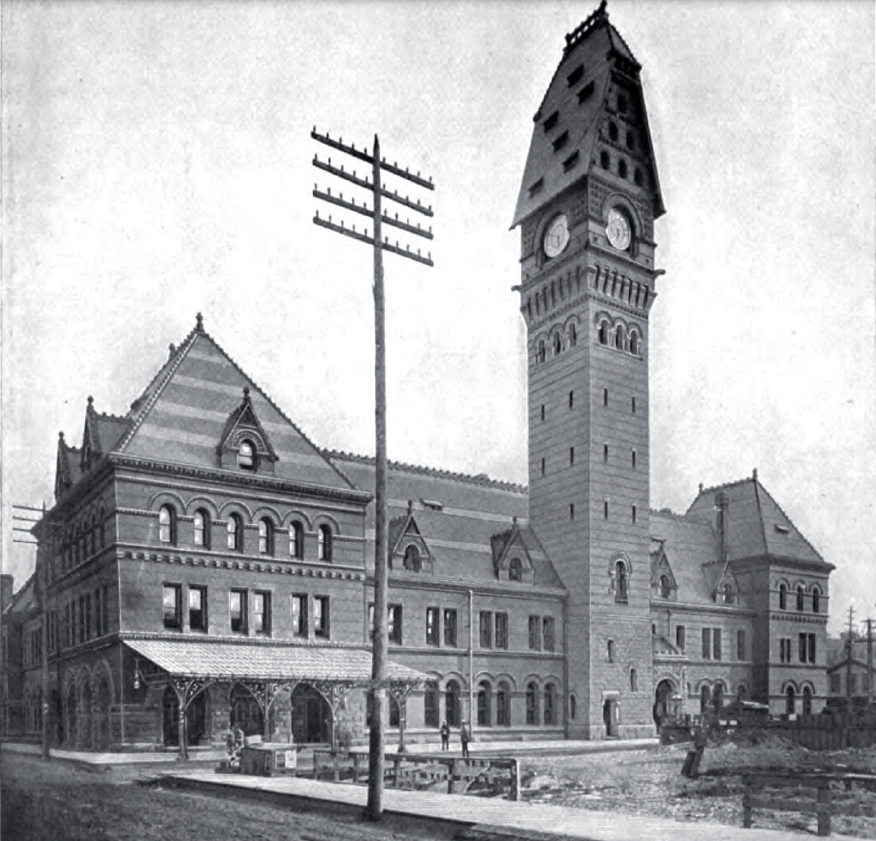
Dearborn Station via Chicagology
Caught in the Blaze
In 1922, a fire at Dearborn Station would alter the course of its history. The cause of the fire remains unclear, with possible origins including crossed electric wires, an overheated steam pipe, or a discarded cigarette. The fire caused significant damage, affecting the top floor of the podium and the tower.
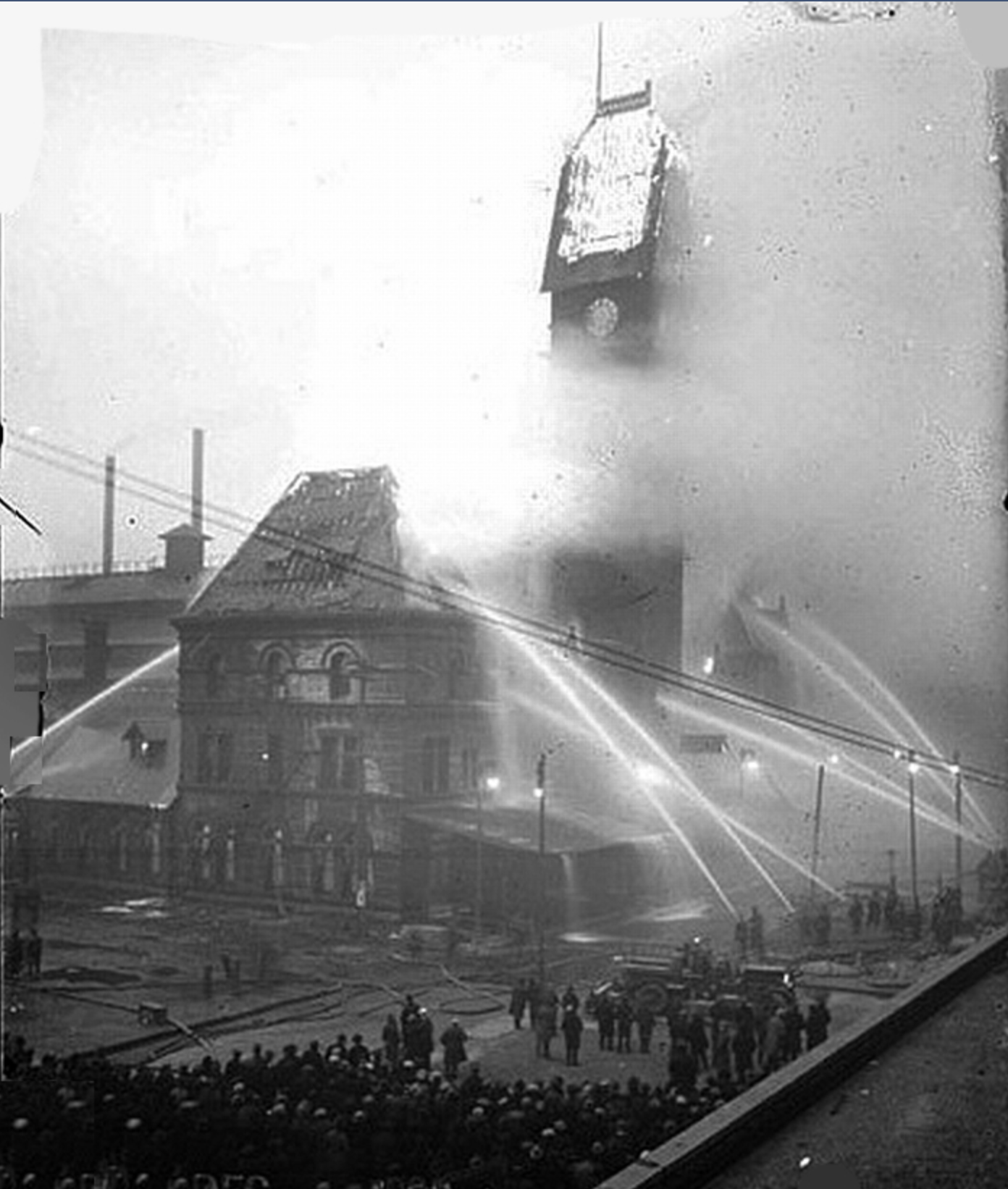
Dearborn Station in 1922 fire via Chicagology
Despite the extensive damage, all employees and travelers were evacuated in time, and large quantities of Christmas mail were saved by railroad and postal employees. The fire, which lasted three hours, attracted thousands of spectators from the local area.
During the reconstruction, the pitched roofs atop both the base and the tower were not retained, leaving what is today’s flat-roof structure.
The 1920s and Beyond
At its peak in the 1920s, Dearborn Station was incredibly active, with 146 trains arriving daily, carrying 17,000 passengers. Among these trains were the Santa Fe’s Super Chief, El Capitan, and Chief. However, by the 1920s, the significance of passenger railway travel started to wane as more individuals began using streetcars or automobiles.
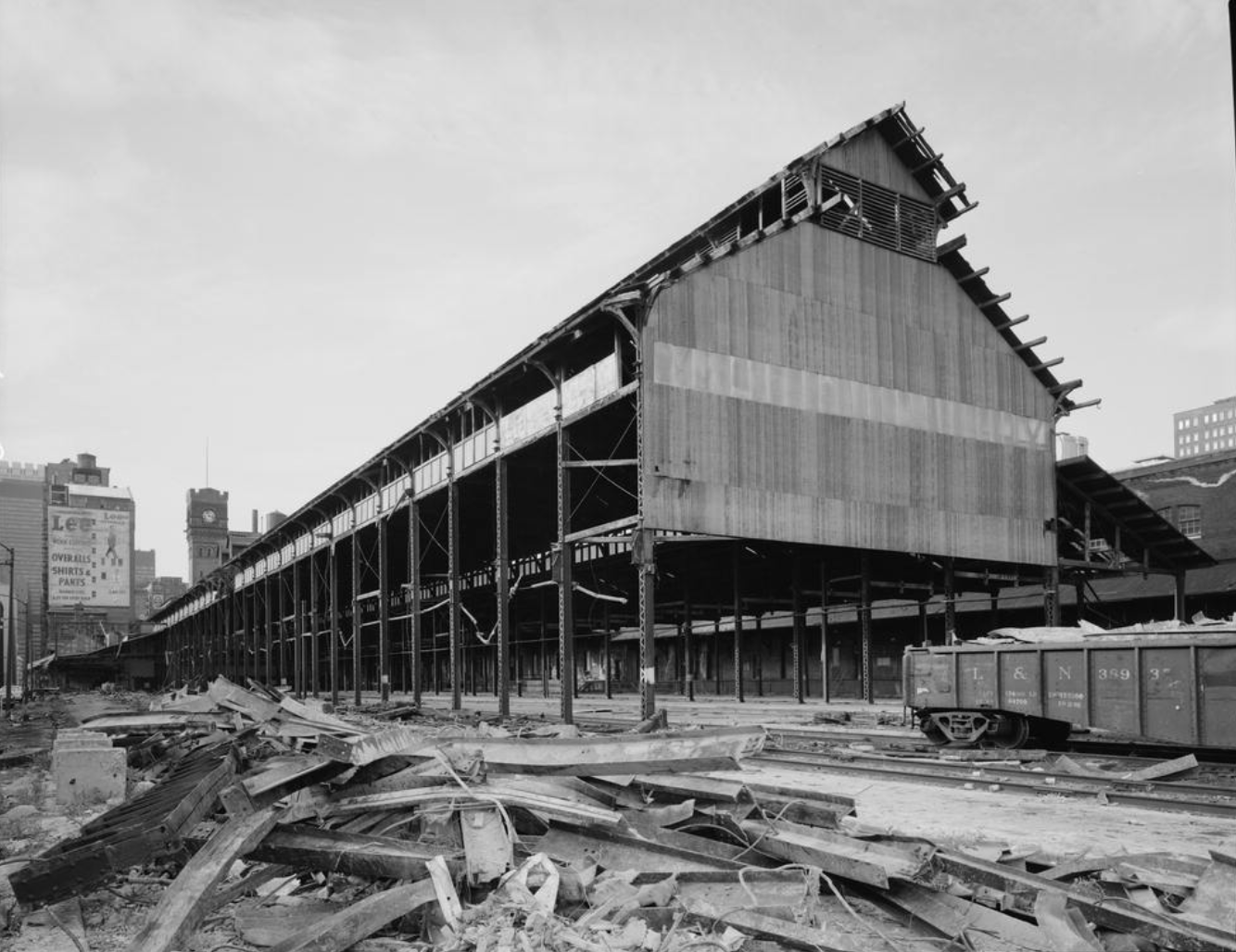
Dearborn Station train shed demolition. Photo from survey HAER IL-6 via Library of Congress
Having been compounded by the fire, the decline continued until September 1967, when the Monon Railroad ended its service to Dearborn, upon which others followed. The station officially closed in 1971, though some commuter service remained until 1976, upon which the train shed section was demolished.

Dearborn Station. Photo by Marc Rochkind

Dearborn Station in 2006. Photo by Beyond My Ken
Current Use
Dearborn Station currently serves as a shopping mall, offering office, retail, and entertainment spaces. This change represents the reduced role of passenger rail service amongst civic functions. Despite no longer being used for its original purpose, its remaining architecture serves as a reminder of its eventful past.
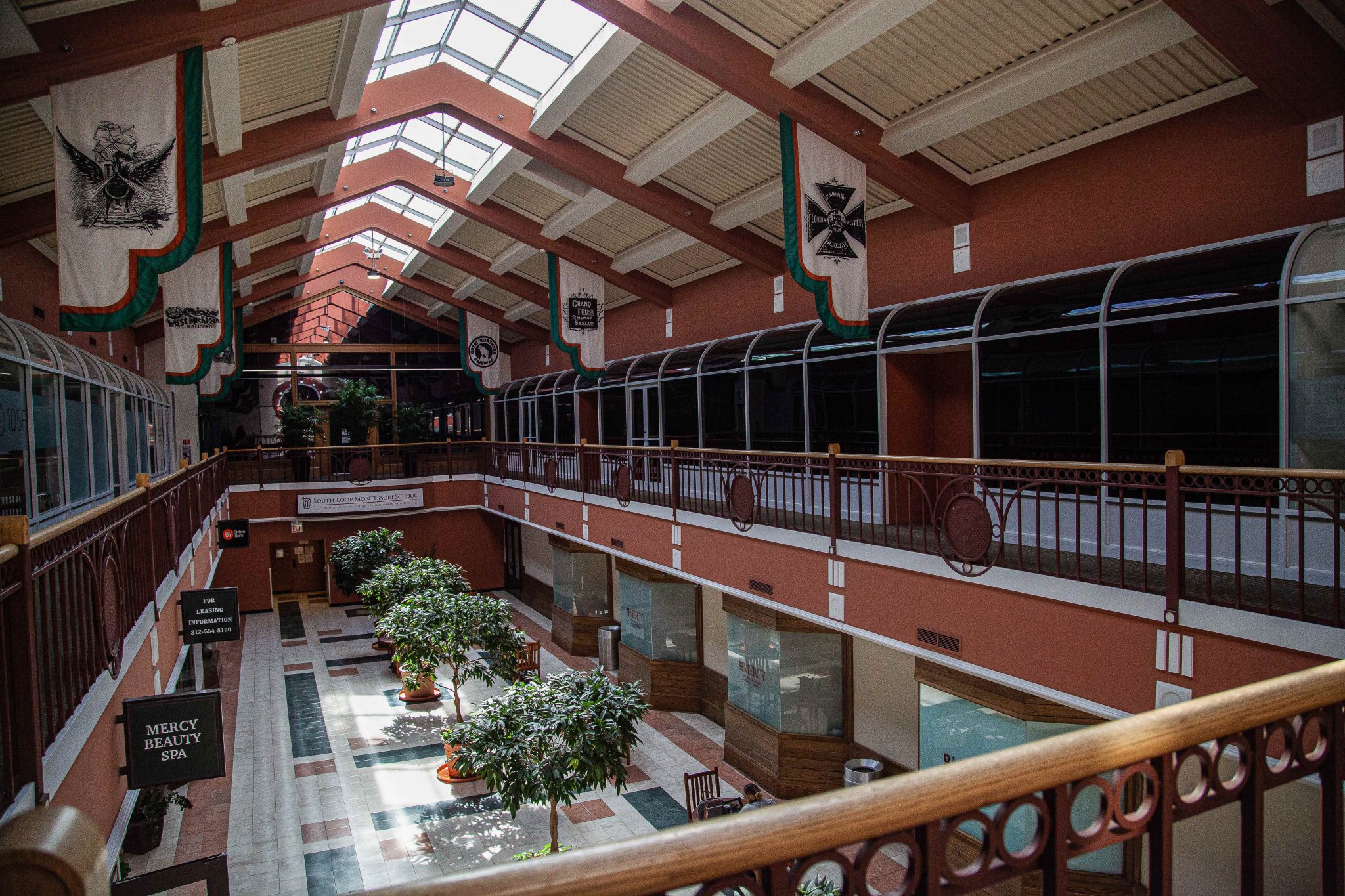
Dearborn Station after interior renovation. Source: In The Loop
Subscribe to YIMBY’s daily e-mail
Follow YIMBYgram for real-time photo updates
Like YIMBY on Facebook
Follow YIMBY’s Twitter for the latest in YIMBYnews

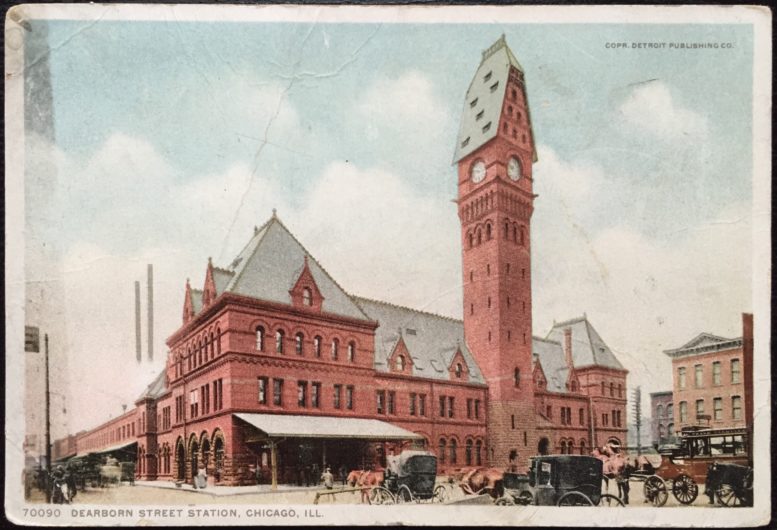
looks better without the roof tbh
I couldn’t disagree more. That steep pitched alpine roof was awesome. The tower looks like its missing its hat now.
I agree with you….what an awesome piece of architecture!
The 1922 fire may have actually saved Dearborn Station because its foundation was poorly designed. The tower, in particular, sank and sank over the years and had to be cut off-from the rest of the structure. Eliminating the slate roof reduced the weight enough to preserve the walls. The fire somehow spared the train shed, a cheap slap-dash wooden affair thirty years obsolete when constructed.
It’s a stretch to say that the depot was the “brainchild” of architect Eidlitz. The Chicago & Western Indiana Railroad owned the building. It, in tern, was owned by five railroads–the Chicago & Eastern Illinois, Erie, Grand Trunk Western, Monon, and Wabash. The Atchison Topeka and Santa Fe was a tenant. Each had company architects and they each helped supervise design and construction. The C&O was a tenant for only a very short period.
The depot did have a Fred Harvey restaurant best known (post-depot fire) for its Edgar Miller murals.
I also disagree..the tower was the “icing on the cake”. I think it was quite beautiful with it.
Do you know what happened to the murals?